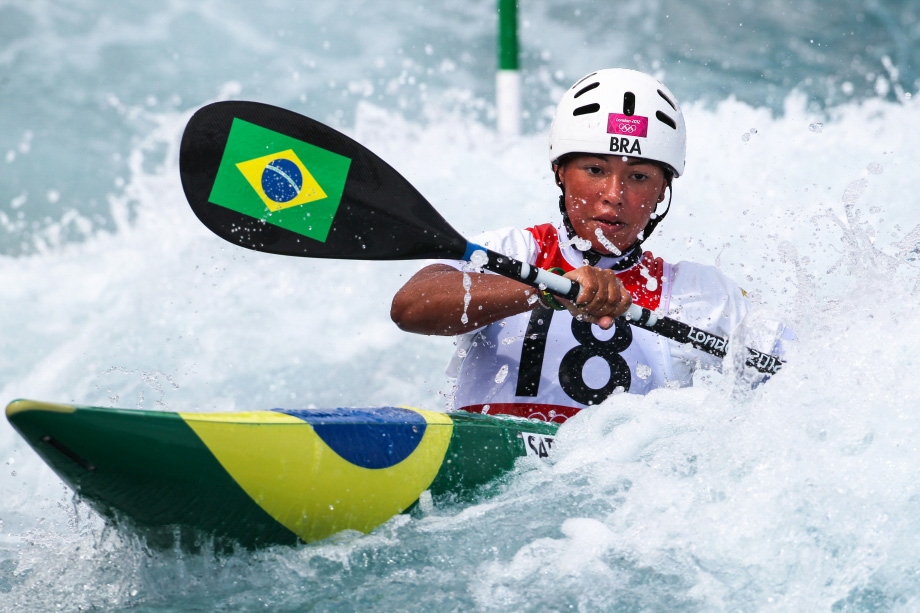Rio 2016 Olympic and Paralympic Games
Canoeing has three disciplines in Rio with Sprint and Slalom represented at the Olympic Games and Paracanoe making its debut at the Paralympic Games.
There are 22 gold medals up for grabs across the three disciplines with 12 in Sprint, six in Paracanoe and four in Slalom.
In 1924 Canoe Sprint made a splash as a demonstration sport at the Olympic Games in Paris. Then at the 1936 Berlin Games, sprint became one of the core sports and has remained ever since.
Canoe Slalom was introduced as a demonstration sport at the Munich 1972 Olympic Games where over 30,000 spectators witnessed a thrilling start to the sports Olympic history.
Despite its huge success the sport had to wait a further 20 years until the 1992 Barcelona Games for its full integration into the main Olympic programme.
Paracanoe started in 2009 as a demonstration sport at the ICF Canoe Sprint World Championships. It was an instant success within the para-sport movement and became a fully intergrated into the ICF Canoe Sprint World Championships programme in 2010.
Later in 2010, the International Paralympic Committee (IPC) announced that paracanoe would make its debut at the Rio 2016 Paralympic Games.

Rio 2016 Canoe Sprint
– Canoe Sprint Format and Rules
– Canoe Sprint Schedule
– Canoe Sprint History
– Canoe Sprint Qualification
– Canoe Sprint Athlete Profiles
The Brazilian Lowdown
Inspired by childhood experiences in Germany, Jose Wingen (GER), resident of Estrela in the state of Rio Grande do Sul, designed and built the first known racing kayak in Brazil in 1943.
The sport’s development however was slow until the late 1970s when Leopoldo Avila (BRA) returned from a trip to Europe with a fibreglass kayak. Avila went on to build more than 200 modern kayaks.
Rio de Janeiro’s Lagoa Rodrigo de Freitas, the venue for the Rio 2016 Olympic and Paralympic Games canoe sprint and para-canoe events, is the sport’s spiritual home in Brazil. In 1984 it hosted the country’s first official canoe sprint competition and since then has regularly been used for major national and international tournaments.
Brazil became a prime destination on the international canoe sprint calendar in the late 20th century. In 1988 the South American Canoe Championships took place in Sao Paulo. Ten years later the ICF Canoe Sprint World Cup was held in Entre Rios Oeste, Parana, while Curitiba, also in Parana, hosted the 2000 ICF Canoe Sprint World Cup and the 2001 ICF Junior Canoe Sprint World Championships.
Brazilian athletes made their Olympic Games debut at Barcelona 1992. Sebastian Cuattrin went on to finish eighth in K1M 1000m at the Atlanta 1996 Games – the best result at an Olympic Games from a Brazilian canoe sprinter to date.
In 2013, Brazil finally succeeded in the global stage. Iisaquias Queiroz Dos Santos (BRA) won gold in the C1M 500m and bronze in the C1M 1000m at the 2013 ICF World Championships in Duisburg, Germany. Two years earlier, Queiroz Dos Santos had proved his talent by winning gold in the C1M 200m and silver in the C1M 500m at the ICF Junior World Championships.
Rio 2016 Canoe Slalom
– Canoe Slalom Format and Rules
– Canoe Slalom History
– Canoe Slalom Qualification
– Canoe Slalom Schedule
– Canoe Slalom Athlete Profiles
The Brazilian Lowdown
Ana Satila (BRA) is the name to know in canoe slalom in Brazil. The 20-year-old won gold at junior level at the 2014 ICF Junior and U23 Canoe Slalom World Championships. She is the sport’s first Brazilian world champion.
Satila, who was Brazil’s only canoe slalom competitor at the London 2012 Olympic Games, finishing 16th in K1W, also picked up a gold in the C1W and a silver in the K1W at the Toronto 2015 Pan American Games.
The emergence of world class results is indicative of the world class facilities and coaching that now exist in Brazil.
In 1997 the southern city of Tres Coroas hosted the first of three ICF World Championships to take place in Brazil. But it was the construction of the Itaipu Canal near the Iguazu Falls, one of the seven new natural wonders of the world, which transformed the sport at elite level. The national training centre successfully hosted the 2007 ICF Canoe Slalom World Championships and the 2015 Junior and U23 ICF World Championships.
Brazilian paddlers Charles Correa and Anderson Oliveria won bronze at the 2015 U23 World Championships in C2M, before adding a silver in the same category at the Toronto 2015 Pan American Games. Teammates Pedro Goncaleves and Felipe Borges also won medals in Toronto, claiming a silver in K1M and a bronze in C1M respectively.
Borges and his fellow Rio 2016 hopefuls have Luiz Augusto Merkle from Parana state and two Sao Paulo residents, Jose Roberto Pupo and Massimo Desiati to thank for introducing the sport to the nation in the early 1980s. The first centre for canoe slalom was in the Juquia River, 70km from Sao Paulo. The sport caught on in the wet, water-filled states of the south, principally Rio Grande do Sul, Minas Gerais, Sao Paulo and Rio de Janeiro.
Southerner Gustavo Selbach won the first major international medal for Brazil, claiming bronze in the 1992 ICF Junior World Championships. The same year, Gustavo joined his brother Leonardo Selbach as part of Brazil’s first canoe slalom team to compete at the Olympic Games.
The sport is growing in popularity in Brazil, with the Brazil Canoe Federation (CBCa) reporting more than 300 paddlers on the professional circuit in 2015. Following the Rio 2016 Games, the canoe slalom complex in Deodoro will become an elite training centre, with areas accessible for local school children and adults to get involved in the sport.

Rio 2016 Paracanoe
